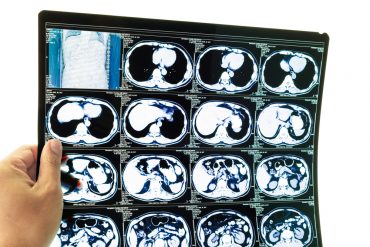
Financial services and healthcare organizations are leading the way with the adoption of AI. And many companies across all industries are building real-time machine-learning applications.
Enterprises continue to embrace artificial intelligence in a big way, and are pursuing technologies that provide real-time interaction between people and machines, along with an emphasis on real-time machine learning to underpin these applications and more.
These are the findings of a recent analysis conducted and released by Databricks, based on insights culled from more than 10,000 of the company’s global customers.
Natural language processing (NLP) is the top data science and machine learning application for the second year running, the survey finds. Three-fourths of enterprises, 75%, now have NLP in production, followed by 55% running geospatial technologies, and 44% using graph databases. Another 42% are applying time series data against their AI systems, while 34% are employing computer vision.
See also: Why Real-time Businesses Need “Flight Data Recorders”
Serverless’s role in real-time applications
Companies are also shifting to serverless platforms to build real-time machine-learning applications, the study shows. “These real-time ML systems are revolutionizing how businesses operate by providing the ability to make immediate predictions or actions based on incoming data,” the survey authors state. “But they need a fast and scalable server infrastructure that requires expert knowledge to build and maintain. Serverless model serving automatically scales up or down to meet demand changes, reducing cost as companies only pay for their consumption.”
With this foundation, companies can build real-time machine-learning applications “ranging from personalized recommendations to fraud detection,” the survey’s authors point out. “Model serving also helps support LLM applications for user interactions. We have seen steady growth in the adoption of serverless data warehousing and monitoring, which also scales with demand.”
Financial services, the largest adopter of serverless products, grew usage 131% over the past six months, the survey also shows. “This industry strives to predict the markets, and real-time prediction provides stronger market analysis.” Healthcare and life sciences organizations also grew their usage of serverless products at about the same rate over six months.
The survey also shows significant growth in AI adoption across the industries it surveyed. This year, the number of AI models put into production this year was 11x greater than seen in last year’s survey. AI has finally moved past the experimentation and proof of concepts stage, they note.
At the same time, 56% more companies are logging experimental models compared to a year ago, and 210% more are registering models, the survey shows.
With machine learning, after years of intense focus on experimentation, organizations are now charging into production with 1,018% more models having been registered this year, far outpacing experiments logged, which grew 134%. .
AI has moved from the proof-of-concept stage to production, the survey confirms. In early 2023, the ratio of logged-to-registered models across all customers was 16-to-1, meaning that for every 16 experimental models, one model got registered for production. In the most recent study, the ratio of logged-to registered models dropped sharply to 5-to-1, an improvement of 3x, they found. “Companies are becoming significantly more efficient at getting models into production, spending fewer resources on experimental models that never provide real-world value.”





























